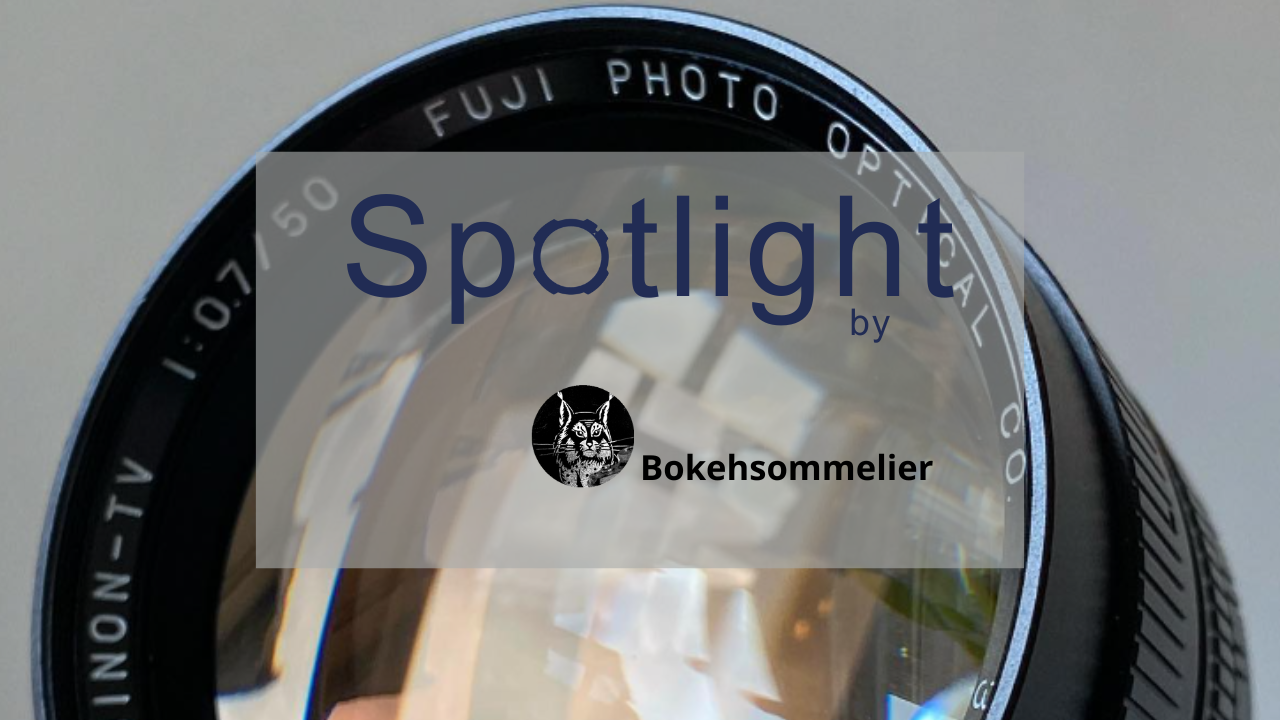Spotlight by 𝗕𝗼𝗸𝗲𝗵𝘀𝗼𝗺𝗺𝗲𝗹𝗶𝗲𝗿; f/0.7 Lenses 6/5/2024, 12:00:00 AM

This article was written and posted on Instagram by @Bokehsommelier. We have adapted it to blog format and published under his permission and supervision. You can learn more about him through https://bio.link/bokehsommelier #Opticswithasoul
Everyone knows the Zeiss lens which shot the dark side of the Moon, that candlelight scene in “Barry Lyndon” and a hole through a couple people’s wallets every time one sells at the auction in Vienna.
Likely fewer people know it certainly was neither the first nor the only 50mm f/0.7 lens and that there’s even faster ones out there!
While the Zeiss Planar 50mm f/0.7 has its roots in a public health campaign, seeking to more effectively detect tuberculosis using x-ray (R-Biotar) and a subsequent design-approach by Maximilian Herzberger (40mm f/0.8 of 1937) for Kodak, the first of its oriental equivalents was a spawn of less peaceful activity: In the late 1930s the imperial Japanese airforce experimented with nighttime aerial reconnaissance using extremely bright magnesium flares and equally bright lenses. For this purpose the Yokosuka Naval Air Technical Arsenal led by Tomita Ryōji developed a 6.5x9cm plate camera which would be manufactured by Konica.
The lens it used was a 130mm f/1 and made by Tōkyō Kōgaku, later known as Topcon. This design proved somewhat troublesome and Maruyama Shūji of Topcon was ordered to develop a successor. Maruyama came up with a calculation radically different from other 0.7ish lenses which either used speedboosters (sorry Zeiss) or dubious Petzval and Ernostar derivatives. His highly asymmetrical designs featured eight elements in four groups, weighted in at 1kg and covered 24x24mm at a flange of just 7mm.

From what I’ve read the lens was never used in it’s intended purpose and only five were ever produced - with Maruyama keeping one. Allegedly legendary photographer David Duncan tried to get his hands on a sample but the owner refused. Topcon made an upscaled version after the war which was used on a polar expedition in the 50s.Was there anything even faster than the already ludicrous aperture of f/0.7? Well, yes but that is a question of definition: some x-ray and industrial lenses go down to some crazy f-stops but have a zero flange and aren’t corrected for anything more demanding than a monochromatic crt screen, let alone actual photography.
Some people on YouTube might try to sell them to you as a Zeiss Planar equivalent but they just aren’t. There’s plenty of 0.7 lenses for the tiny diodes in thermal imagers, but they’re made of Germanium and don’t even transmit visible light. To unblur that line a bit: let’s only focus on lenses intended for photography of actual things in the visible spectrum and covering any significant format.
GOI (State Institute of Optical Design, Russia) for example designed and build a catadioptric (mirror) lens in march of 1957 which yielded f/0.65 at 72mm and covered 16mm film. Edward Kaprelian calculated a Petzval derivative for the US Army Signal Corps a little later which would boast f/0.6 at 33mm and covered 16mm film as well.
Interestingly the absolute fastest ever lens intended for photography would gain it’s blistering speed of f/0.384 from using a design for astronomical observation, invented by the Estonian optician Bernhard Schmidt. The 1967 American Optical 83mm f/0.384 covered an image circle of an astounding 41mm and was used again for aerial reconnaissance.


At some point wanting your lens to be faster and faster becomes silly and more of a liability than an asset. Zeiss ended this silliness by constructing the absurdly looking (and non functional) Super-Q-Gigantar 40mm f/0.33 (for 35mm SLRs) in the 1960s with “Q” standing for “Quatsch” which translates to “nonsense” or “meaninglessness”. Peak German humour.
My sample here is probably the last of the sillies. A rare Fujinon “CF50L” 50mm f/0.7. Made in the 90s for scientists actually needing the aperture, it has a ridiculously short flange like all 0.7s and covers super16. Time to get a Blackmagic micro or something modified!




Copyright © Cinelenses S.L 2025.








